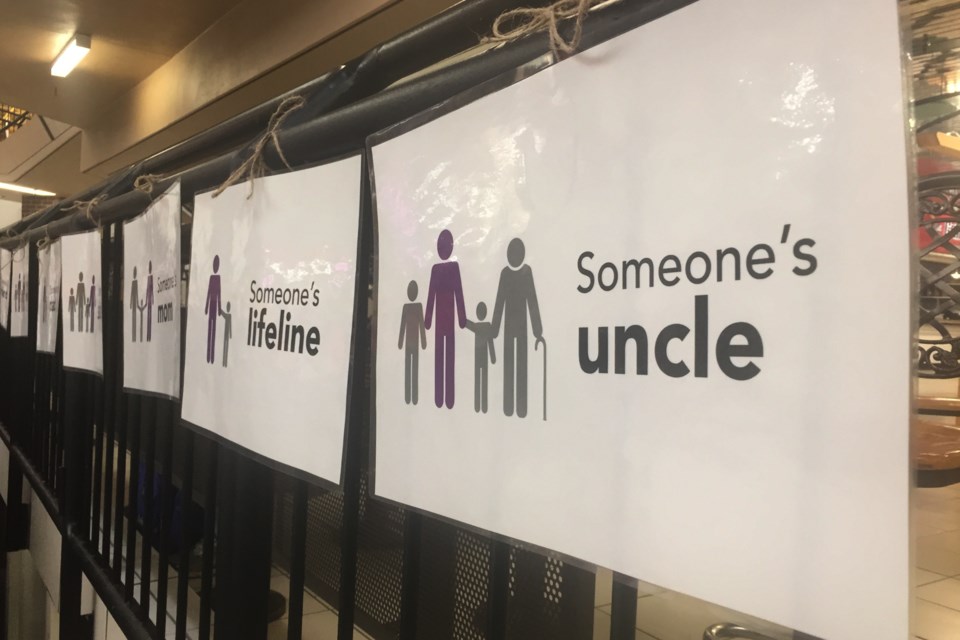THUNDER BAY - In 2018, 44 people died of opioid overdose in Thunder Bay.
It’s the damning statistic makes Thunder Bay the highest per capita opioid death rate in Ontario.
The 44 deaths were a 40 per cent increase from 2017, a year in which Thunder Bay also held the highest provincial rate.
On Tuesday, Cynthia Olsen acknowledged the statistics, but wanted to humanize them.
“We often talk about numbers, that’s what gets reported,” Olsen, the Thunder Bay Drug Strategy coordinator said.
“Individuals who are dying in our communities are brothers, sisters, aunts, uncles. They’re somebody’s hero, somebody’s parent. It’s really important to provide an opportunity to recognize the impact that unintentional, and often preventable overdose deaths have on families and communities.”
Forty-four placards were displayed around railings at Victoriaville Centre where outreach organizations gathered to recognize international overdose awareness day.
One of the placards read, “someone’s mom.” The adjacent one read “someone’s lifeline.”
On Tuesday, the message was about healing. The community in crisis was moved by booming drum echoes from traditional Indigenous drum groups that could be heard across the mall.
“If people would like to write a tribute to someone who overdosed, fatal or not, we will tie a ribbon to it and put it on the memorial tree we planted a few years ago,” Olsen said.
Attendees of the event also had the chance to gather information from local health organizations such as the Thunder Bay District Health Unit, Elevate NWO, and the Nor’West Community Health Centre, among others.
The groups handed out naloxone kits to the public, a method which Olsen believes is helping despite the bleak statistics.
“Now that more people have (naloxone kits) in their hands, more people are using it. That means it’s likely saving lives.”
Between July 2017 and June 2018, nearly 3,900 naloxone kits were handed out by the Thunder Bay District Health Unit and local pharmacies, representing the highest distribution rate in Ontario during that time.
Safe supply has been a controversial national response to help curb the opioid crisis. In Thunder Bay, the Nor’West Community Health Centre opened an overdose prevention site in 2018.
“It’s the bottom line of health care. We are definitely saving lives, and it also gives us the avenue to refer people to other services. It’s a gateway for us to access other treatment services,” said Michelle Kolobutin, harm reduction coordinator at the health centre.
The site on Simpson Street received several extensions to remain open while the Ministry of Health and Long Term Care reviewed its application.
“I think nationally there’s a discussion about safe supply being a critical component to it,” Olsen said. “There is a toxic drug supply out there. People use drugs, we’ve been doing it since time immemorial. So if that continues to happen, we’re going to continue to see overdoses.”
Despite the ongoing efforts of health organizations and their growing number of solutions, the opioid tide appears to be an unstoppable force.
Olsen, after listing off a number of options over the course of two minutes, summarized it all by saying:
“We need really heavy investments in more robust resources at the community level,” Olsen said. “We’re not the only community across Canada, these increases are happening everywhere.”
